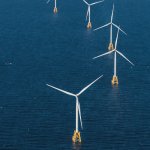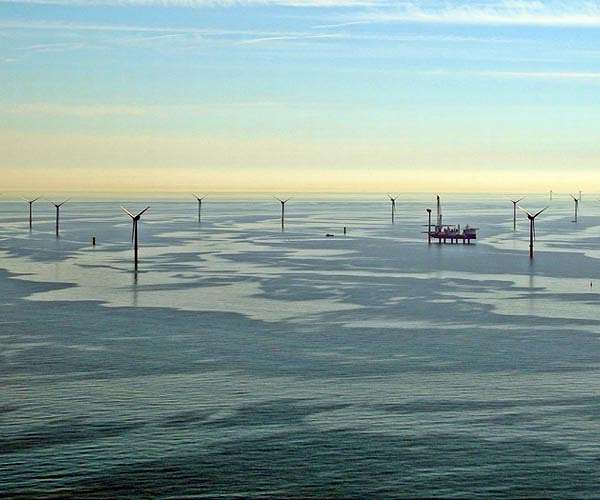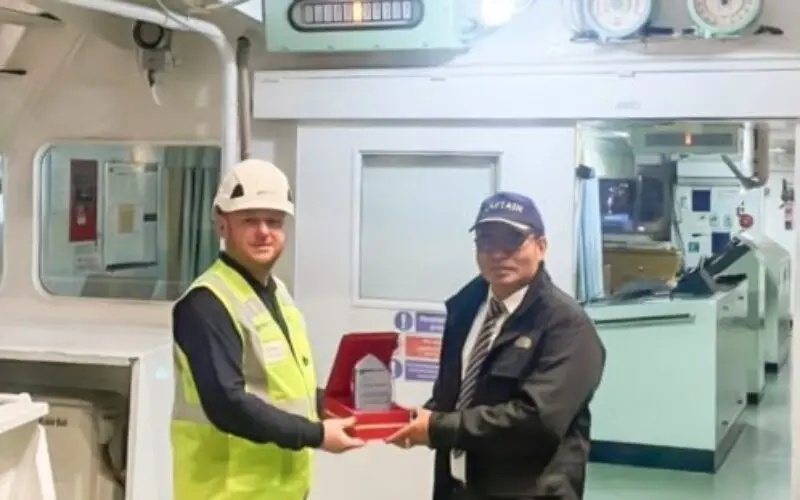
By Sloan Freeman, CEO and co-founder, Geodynamics
In April 2023, Maryland Gov. Wes Moore signed the Promoting Offshore Wind Energy Resources (POWER) Act, enacting the state’s new 8.5-GW offshore wind target while highlighting the local workforce development and domestic supply chain features of the bill. This was just the latest example of the offshore wind industry’s emphasis on “local content” in these massive projects.
Less than a year ago, the federal Bureau of Ocean Energy Management (BOEM) approved two leases for large offshore wind projects off the coast of North Carolina, known as the Carolina Long Bay (CLB) sale. That lease auction pioneered a new local content requirement where bidders were invited to include a local content commitment to receive a percentage bonus on their bids. This extra bidder credit required developers to commit to helping establish a domestic supply chain for offshore wind as well as commit to funding workforce development programs for the offshore wind industry.
However, offshore wind developers, as well as the policymakers who make the rules for offshore wind, have so far not made the connection between the drive toward domestic economic development known as “local content” and the varied uses of geospatial data. Full understanding of that connection should lead policymakers to expand their thinking on local content requirements and include geospatial “content” and related services in offshore wind lease auction rules like the bonus bidder credit.
The core of geospatial data analysis is the gleaning of useful insights into the local conditions that meaningfully impact a project or business objective. The basic need for this in federal offshore wind leases is that the required site assessment plans (SAPs) and construction and operations plans (COPs) must contain detailed information about the affected geographies and an analysis of the physical impacts on the local area. What is less obvious is the connection to increasingly important local socioeconomic impact assessments that underlie local content rules. These lease requirements can have a strong tie to geospatial data in topics such as location-dependent livelihoods, local economic activity, displacement of people and businesses, and transmission line siting.
Fundamentally, the real objective of local content policy is not the amount of physical material made in the United States, but the longer-term structural growth in local economic activity. But the word “content” implies physical materials, which has led to a focus on supply chains, manufacturing and construction. In the CLB example, there was some evolution in this thinking in that the bonus was awarded for commitments to local workforce development, but even then, the focus was on the workforce involved in construction and operation of the physical facilities.
The CLB commitments demonstrate some of the limitations in prioritizing things like the physical supply chain. Even in the long-term, the total offshore wind potential off the coast of North Carolina is unlikely to spur a North Carolina supply chain, manufacturing facilities or even significant port construction beyond the minimum needed for delivering the CLB wind farms. What may ultimately prove more valuable in the long term is the development of a “services infrastructure” that is both local and can be provided to other geographies. As geospatial analysis is recognized as an integral part of the offshore wind development process, the development and economic activity of geospatial services can be an enhancement to the scope of local content benefits.
Even further, geospatial services could be used to help assess other local socioeconomic impacts. Traditional thinking on geospatial data and offshore wind development is focused on local physical conditions relevant to project deployment. Typically, this includes the environmental impact of the construction and presence of large pieces of infrastructure such as transmission facilities and the turbine platforms themselves.
However, a recent report on offshore wind development noted that “formal BOEM guidance for developers includes assessment of not only environmental hazards, water quality, biological resources, endangered species, and archaeological resources, but also social and economic resources.” Latest technology and advances in geospatial analysis could not only provide comprehensive physical impact assessments, but also insights into the impacts and benefits regarding these social and economic resources.
For example, geospatial analysis could more accurately assess disruptions to economic activity on sea (fishing, water recreation, etc.) and on land, such as access to or transit across lands where new transmission lines are sited. On the other hand, similar analysis could be applied to economic benefits from increased grid capacity and lower cost energy in the area such as attracting businesses and jobs.
Building a domestic industry in geospatial services can be a significant contributor to domestic economic benefits from offshore wind projects. Other countries are ahead of the United States in terms of offshore wind development experience and expertise, but geospatial data collection and analysis specific to offshore wind are key work areas where the United States can catch up to and someday surpass other countries. Furthermore, training and providing experience in geospatial jobs is a valuable form of workforce development in that these can be more highly paid jobs that are less temporary than construction jobs.
Finally, it’s worth mentioning some other advantages of designating geospatial services as local content:
- International trade law: Supporting domestic geospatial services does not run afoul of the legal issues with “subsidizing” domestic products and manufacturing.
- National security: Domestic data collection and services avoid national security concerns regarding both visibility into the data as well as foreign supply chain risks.
- More local activity: More of the offshore wind development process, like the early phases of planning and design, can be local content activity versus just the construction phase.
Ultimately, while the CLB offshore wind lease auction was successful in securing major local content commitments, the scope of what was considered local content was still limited to traditional thinking. As a result, the projects may not realize their full potential for bringing economic value to the United States and North Carolina. Going forward, policymakers should strongly consider how geospatial data and services can greatly increase the economic benefits sought by local content policies.
 Sloan Freeman is CEO and co-founder of Geodynamics, an NV5 company. She is a licensed NC Professional Land Surveyor and has completed the NC Military Business Center’s Defense Contractors’ Academy and Duke University’s Research Costing Compliance training. Prior to founding Geodynamics, Sloan worked in the research sector of marine ecology and environmental policy at the Duke University Marine Lab where she managed and coordinated multi-million dollar research grants and projects in the field of coastal and ocean science. As Principal in Charge at Geodynamics, she manages long-term IDIQ contracts with the USACE and coordinates collaborations with partners in coastal engineering, natural resource agencies, and for the US Navy, NOAA, and BOEM.
Sloan Freeman is CEO and co-founder of Geodynamics, an NV5 company. She is a licensed NC Professional Land Surveyor and has completed the NC Military Business Center’s Defense Contractors’ Academy and Duke University’s Research Costing Compliance training. Prior to founding Geodynamics, Sloan worked in the research sector of marine ecology and environmental policy at the Duke University Marine Lab where she managed and coordinated multi-million dollar research grants and projects in the field of coastal and ocean science. As Principal in Charge at Geodynamics, she manages long-term IDIQ contracts with the USACE and coordinates collaborations with partners in coastal engineering, natural resource agencies, and for the US Navy, NOAA, and BOEM.
Filed Under: Featured






